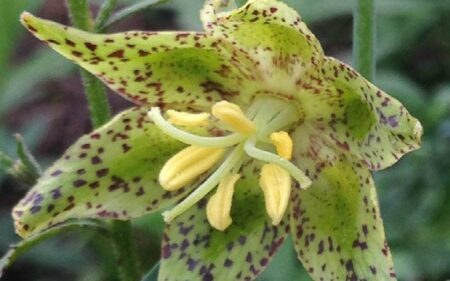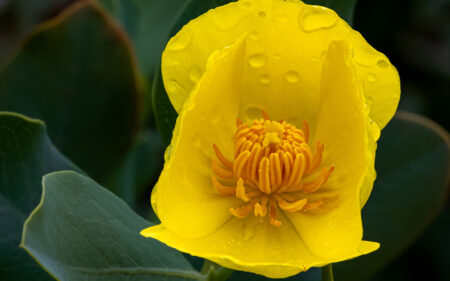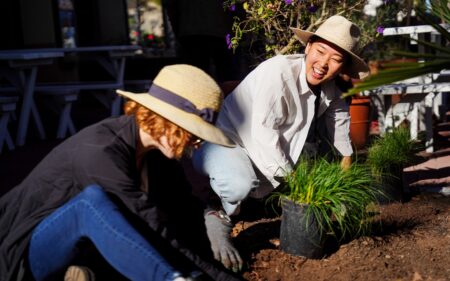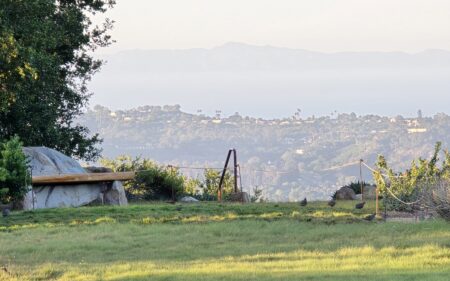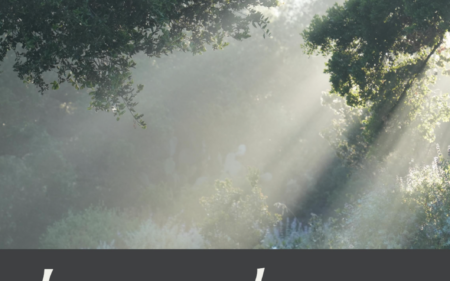Growing Together: Local Teens, Farmers, and Plants Join Forces for a Greener Cuyama Valley
The U.S. Department of Agriculture (USDA), through its Natural Resources Conservation Service (NRCS), has awarded a significant $818,000 grant to Santa Barbara Botanic Garden for a pioneering conservation outreach project in California’s Cuyama Valley. This “Equity in Conservation Outreach Cooperative Agreement,” part of a larger USDA effort to promote equity and accessibility in conservation, is designed to bring climate-smart conservation practices, education, and support to underserved small farmers and ranchers in this unique high-desert agricultural region.
As part of the Garden’s ambitious Landscape Transformation effort, which aims to transform public gardens and open spaces across Santa Barbara County into drought-tolerant native plant habitats, this three-year initiative is focused on helping Cuyama Valley adapt to California’s Sustainable Groundwater Management Act (SGMA). This legislation mandates a reduction in groundwater use across the state, requiring farmers to fallow or retire lands to preserve water resources. In response, the Garden, in partnership with Quail Springs, the Cuyama Valley Family Resource Center, the Cuyama Joint Unified School District, local farmers, and the Cuyama Buckhorn restaurant, will leverage this $818,000 grant to demonstrate and teach sustainable conservation practices that conserve soil and water while creating resilient, biodiverse habitats. By providing hands-on experience, resources, and community-driven outreach, this landscape transformation project in Cuyama Valley aims to empower small farmers with the skills and strategies needed to protect and restore their lands in compliance with state water regulations.
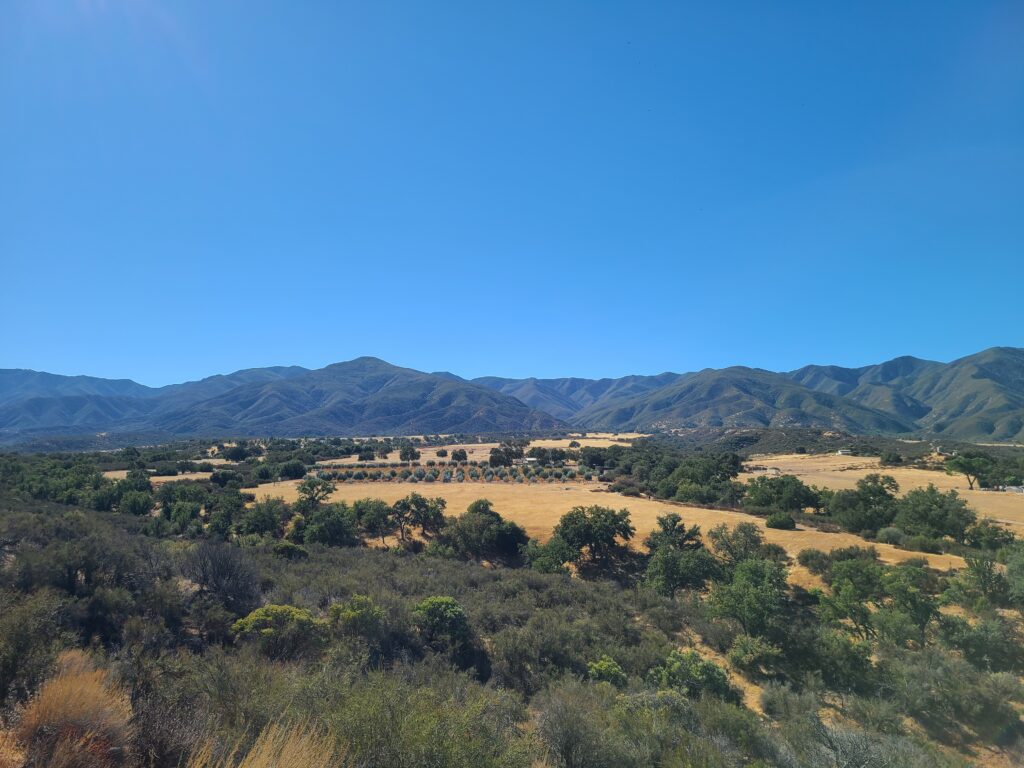
Tackling a Water Crisis in Cuyama Valley
Located in northern Santa Barbara County, the Cuyama Valley is a sparsely populated, high-desert farming region that has faced severe water scarcity issues for decades. In fact, it is one of California’s most groundwater-withdrawn areas. Groundwater pumping has far outpaced natural replenishment, leading to steadily declining water tables. With no other water sources available, this shortage jeopardizes the livelihoods of local farmers and ranchers who depend entirely on groundwater for irrigation. The California SGMA seeks to address this imbalance, enforcing a sustainable approach that requires a sharp reduction in water usage, necessitating that some farmland be left unplanted (fallowed) to lower the demand on the groundwater supply.
“This grant is a wonderful opportunity to implement beneficial conservation measures and prevent the establishment and spread of invasive weeds on fallowed land in Cuyama,” said Denise Knapp, Ph.D., Director of Conservation and Research at the Garden. “Together with our partners, we’ll be rallying the community in a variety of ways to spread the word about the power of native plants in multiple landscapes.”
This landscape transformation in Cuyama will support both the ecological recovery of future fallowed lands and the economic resilience of the region. Its approach aligns with USDA NRCS’s broader goals to support small and underserved farming communities by improving equitable access to conservation practices and resources.
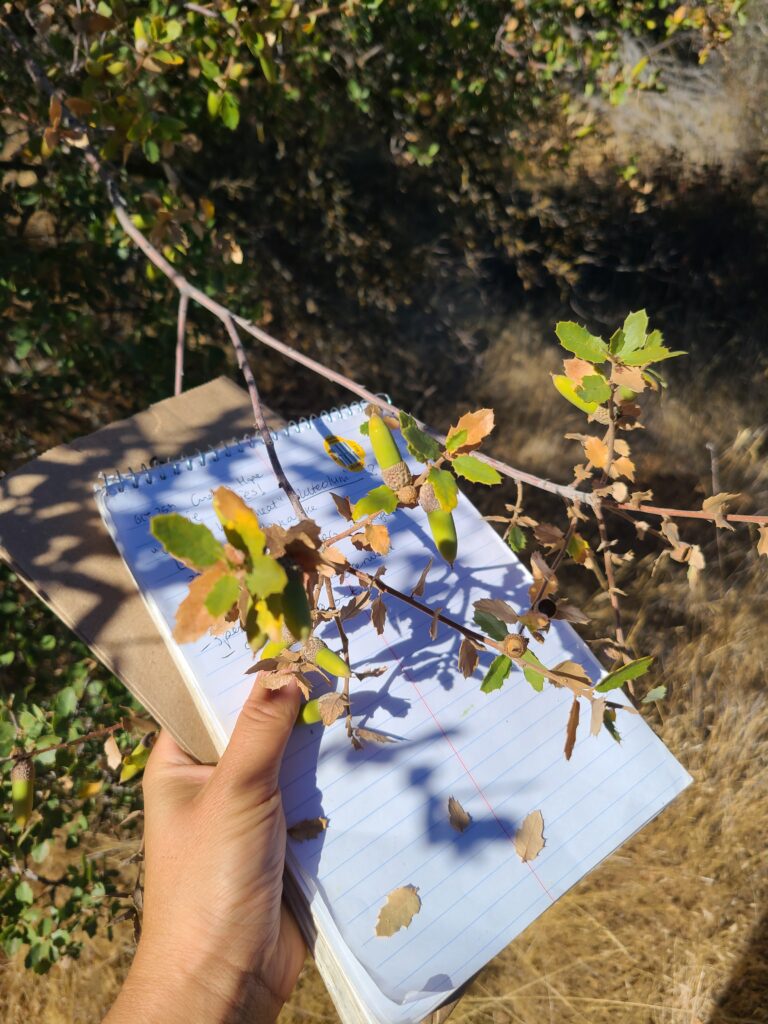
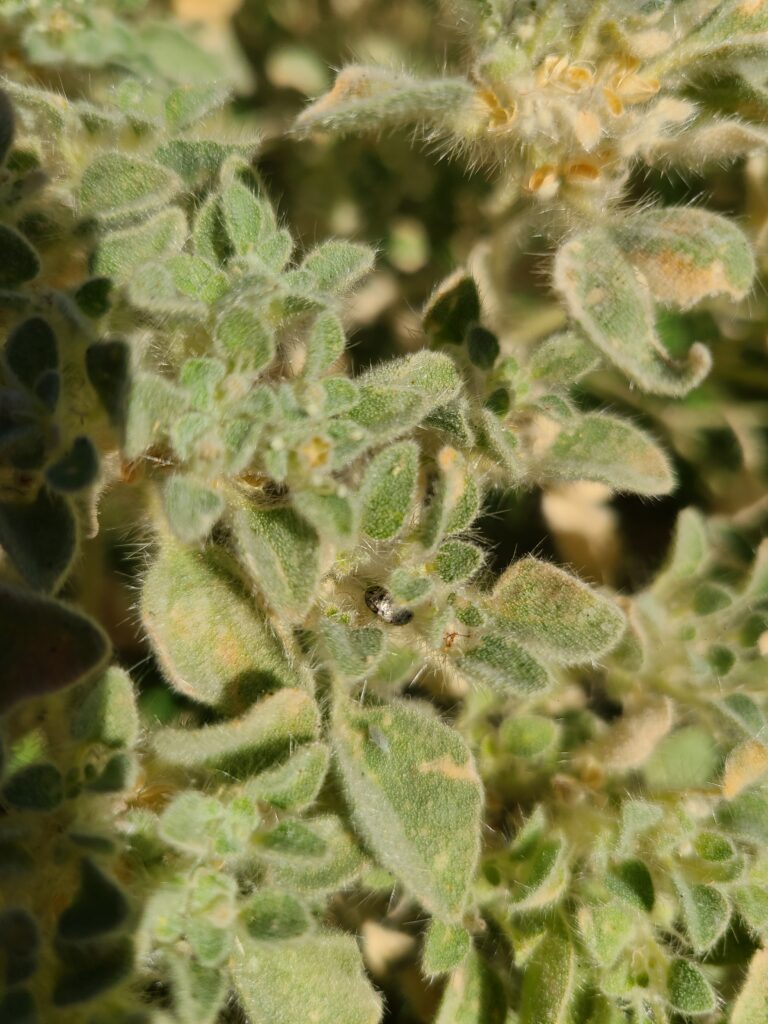
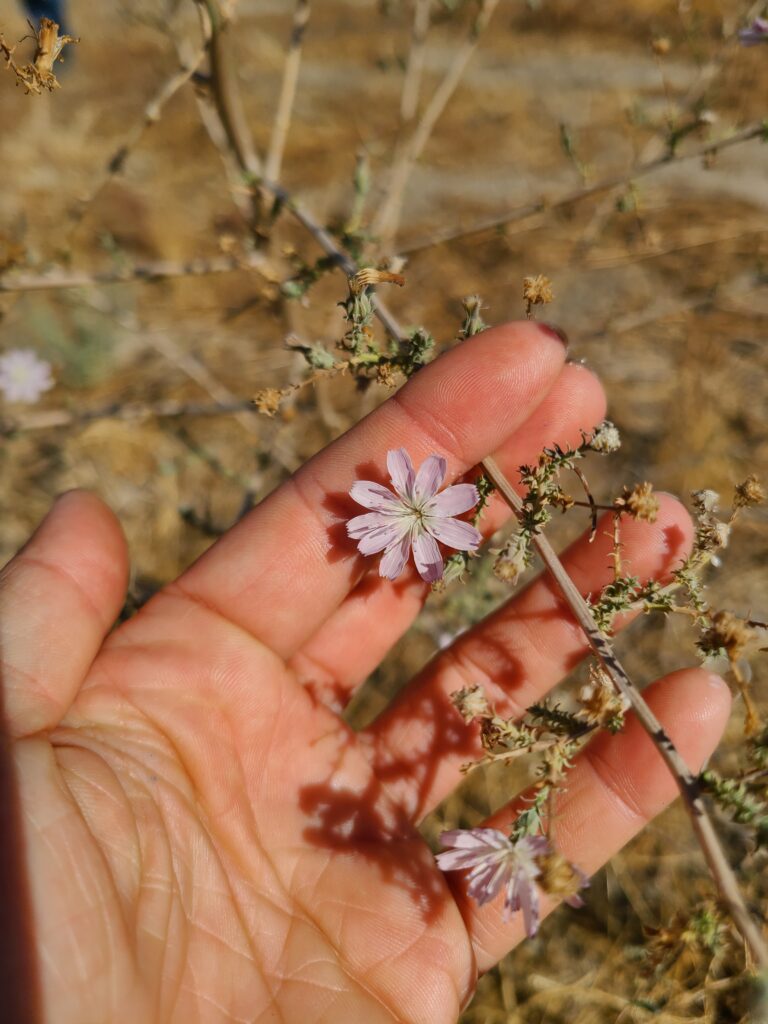
Landscape Transformation Highlights: How We’re Making Conservation Happen
The project is built on four primary goals, each of which addresses different facets of environmental stewardship, education, and economic opportunity for local communities.
- Establish the Cuyama Farmland Habitat Coalition (CFHC)
To support local farmers and ranchers, the project will create the Cuyama Farmland Habitat Coalition (CFHC), a coalition of stakeholders from the agricultural community, conservation experts, and NRCS representatives. Through CFHC, the initiative will host a series of five events for small farmers in the area to introduce conservation practices tailored to the unique challenges of the Cuyama Valley. These gatherings will serve as a forum for networking, knowledge exchange, and leadership development within the community, strengthening local capacity to sustain conservation practices beyond the project’s duration.
- Demonstrate Climate-Smart Conservation Practices
To illustrate the benefits of native plant-based conservation, six demonstration sites will be established across farm and community locations. Three sites will show how native plants can help restore soil health, control erosion, and reduce water use, all while preserving local biodiversity. These transformations will be supported by scientific studies conducted in collaboration with local stakeholders, ensuring that practices are scientifically validated and adaptable to other areas facing similar challenges and exploring different restoration mixes and techniques. Along the way, partners will document each step of the process through photos or videos, allowing the impact of this transformation project to reach a wider audience through educational content.
- Engage Youth through Paid Internships and Educational Curricula
Education and career development are at the core of the project’s mission. In partnership with the Cuyama Joint Union School District, this transformation project will introduce a Conservation Internship Program for 11th-grade students, offering hands-on experience in conservation alongside ecologists and sustainability experts from the Garden and Quail Springs. Each year, two students will be selected to participate, engaging in conservation projects, data collection, and fieldwork. Additionally, conservation-themed curricula, aligned with the Next Generation Science Standards (NGSS), will be created for K-8 students, fostering an early interest in environmental stewardship and science.
- Empower the Community to Harness the Power of Native Plants
To build broader community awareness, the Cuyama transformation project includes two native plant demonstration gardens at public sites, where local residents can learn about the ecological and practical benefits of native plants in water conservation, soil restoration, and habitat creation. The program will include two annual community events, inviting residents to experience the project’s impact firsthand and celebrate the life-giving benefits of native plants. These gatherings will include interactive exhibits, native plant giveaways, and educational activities, encouraging participants to take conservation knowledge back to their own gardens and landscapes.
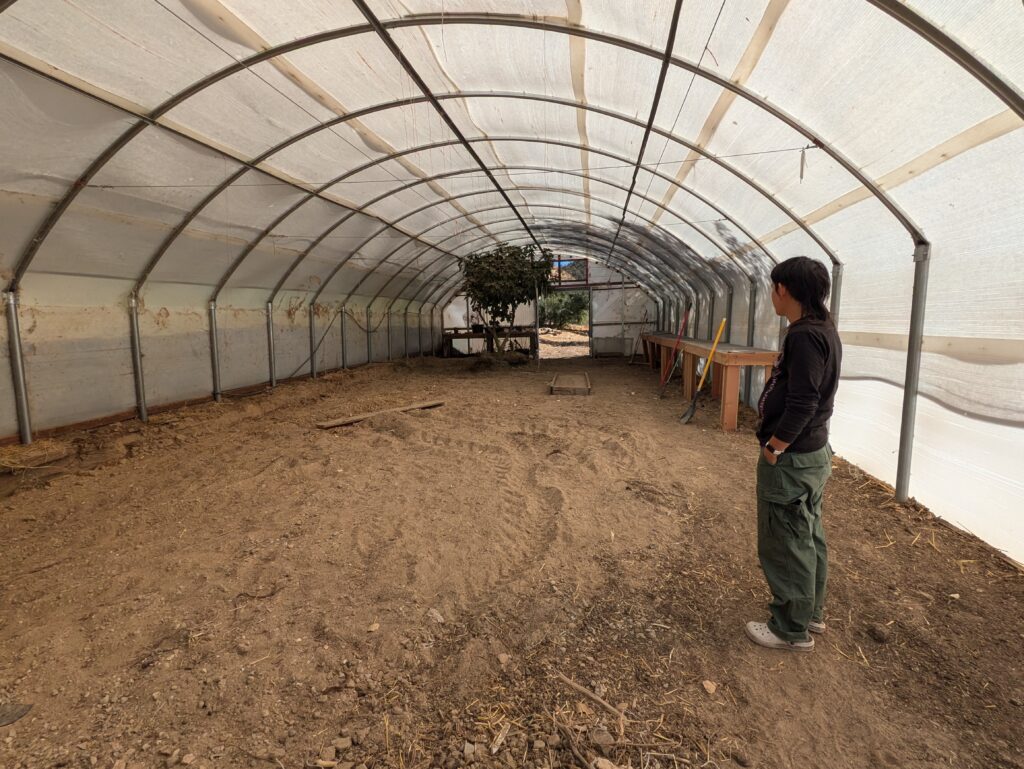
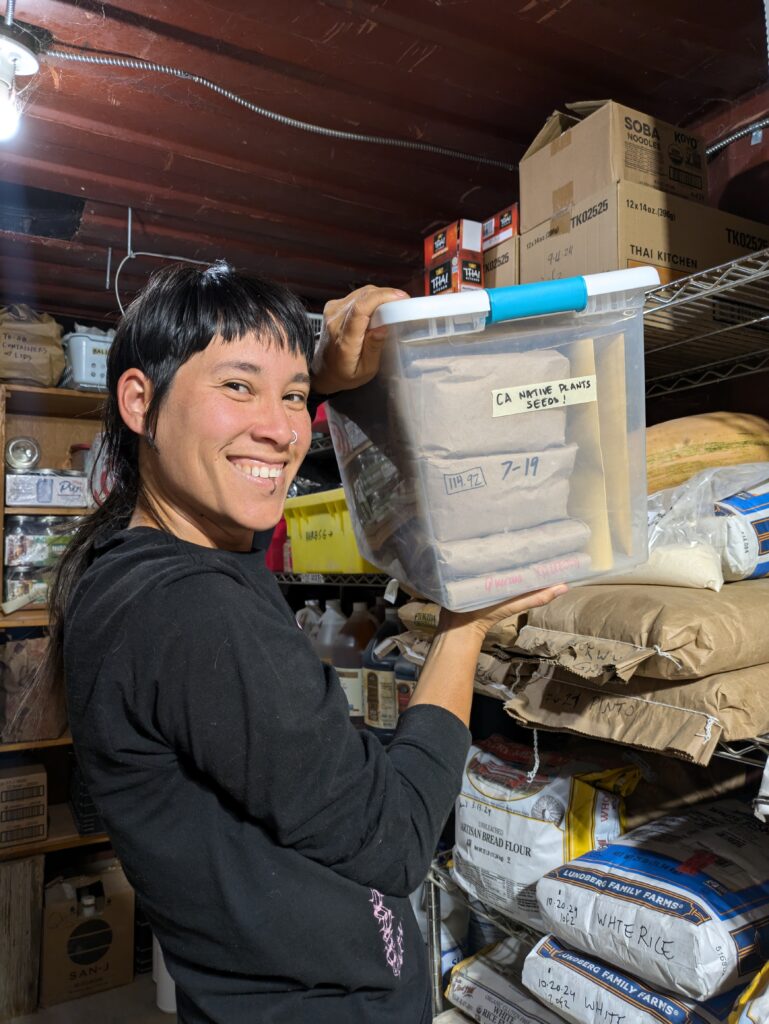
Making It Happen: Who’s Involved and How It All Comes Together
Bringing this landscape transformation to life in Cuyama is truly a team effort, with the Garden, the USDA’s Natural Resources Conservation Service (NRCS), and local partners all playing key roles. The Garden will be spearheading the project’s initiatives, coordinating with partners, and keeping NRCS in the loop every step of the way. We’ll ensure NRCS gets credited on project materials and will follow USDA’s policies on inclusivity and non-discrimination.
Together, all partners will ensure the project remains on track by celebrating major milestones like seed collection, curriculum rollouts, and community events. Every quarter, partners will share updates on achievements alongside annual financial reports to keep all stakeholders informed and ensure the project’s conservation goals are being met.
Creating a Greener Tomorrow: The Long-Term Impact of Conservation
Through this project, the Garden and its partners are creating a sustainable model for conservation that can be replicated in other water-stressed regions. By empowering small farmers and ranchers to implement native plant conservation practices, this project will provide a blueprint for restoring ecological balance to Cuyama Valley’s agricultural landscape, that other communities can also follow. Through strategic partnerships, science-based practices, and community-driven outreach, this landscape transformation initiative in Cuyama is building a more resilient and resourceful community capable of sustaining the land for future generations.
Tune in to watch this transformation project unfold in the Cuyama Valley. You can also support biodiversity by getting involved in volunteer opportunities in your area or by choosing to grow native plants right at home! For updates on the Garden’s transformation projects and tips and tricks to gardening with native plants, join us on social media and follow the link below.
In accordance with Federal civil rights law and U.S. Department of Agriculture (USDA) civil rights regulations and policies, the USDA, its Agencies, offices, and employees, and institutions participating in or administering USDA programs are prohibited from discriminating based on race, color, national origin, religion, sex, gender identity (including gender expression), sexual orientation, disability, age, marital status, family/parental status, income derived from a public assistance program, political beliefs, or reprisal or retaliation for prior civil rights activity, in any program or activity conducted or funded by USDA (not all bases apply to all programs). Remedies and complaint filing deadlines vary by program or incident. Persons with disabilities who require alternative means of communication for program information (e.g., Braille, large print, audiotape, American Sign Language, etc.) should contact the responsible Agency or USDA’s TARGET Center at (202) 720-2600 (voice and TTY) or contact USDA through the Federal Relay Service at (800) 877-8339. Additionally, program information may be made available in languages other than English. To file a program discrimination complaint, complete the USDA Program Discrimination Complaint Form, AD-3027, found online at How to File a Program Discrimination Complaint and at any USDA office or write a letter addressed to USDA and provide in the letter all of the information requested in the form. To request a copy of the complaint form, call (866) 632-9992. Submit your completed form or letter to USDA by: (1) mail: U.S. Department of Agriculture, Office of the Assistant Secretary for Civil Rights, 1400 Independence Avenue, SW, Washington, D.C. 20250-9410; (2) fax: (202) 690-7442; or (3) email: program.intake@usda.gov
USDA is an equal opportunity provider, employer, and lender.
 Donate
Donate